Safety classes now in session
ALICE active shooter training starts early at San Diego City College
Officer Richard Farrell is restrained by members of San Diego City College’s staff and a fellow police officer during the Alert, Lockdown, Inform, Counter, Evacuate (ALICE) Training class in MS-140 on Oct. 22. Photo credit: Mike Madriaga
October 29, 2015
“Every single shooter had an accuracy rate of 50 percent, now we have trained police officers and snipers and they (sometimes) can’t make it 50 percent,” explained Sheila Herron Fox, a City College Police Dispatch supervisor.
Fox was referring to the chart on page three of the ALICE Training paperwork that she handed out earlier in the afternoon of Oct. 22. The chart listed the Columbine, Virginia Tech and the Sandy Hook school killings, followed by statistics.
“Now what’s the difference?”
“The active shooters are now going in,” Fox said. “They know they have about 10 minutes, although the police response is usually between five and seven minutes, you have to figure out how to protect yourself and the people around you, for 10 minutes.”
Fox knows this too well. She has been training and supervising dispatchers for 21 years in Homeland Security issues for first responders, private security and citizen groups.
The ALICE Training program was originally slated for January 2016, but following the Oct. 1 shootings at Umpqua Community College in Oregon, “We decided to move the training up as quickly as possible, and we focused on faculty, staff and administrators, because students are going to look to you for leadership in these type of critical incidents,” Richard Ferrell explained to the 35 plus attendees in MS-140.
ALICE is an acronym for alert, lockdown, inform, counter and evacuate.
Ferrell, a police officer with the San Diego Community College Police Department, has been instructing other police officers regionally and statewide on the topic of active shooter response for the last eight years.
Ferrell, Fox, Angie Kasinak and two other trainers who wore EMRT (Emergency Management Resource Team) uniforms, brought the City College attendees to speed with a proactive alternative to dealing with active shooters on campus.
“We chose ALICE because it’s been accepted by the Department of Education,” Fox explained.
The sooner the police get to the location, the better the chances are for survival. Alerting the police of the whereabouts of the shooter and victims that have been shot are of utmost importance, but informing others of what is learned in ALICE Training will be detrimental as well.
“Do not sit still, be active in your own survival,” said Alonzo Smith, a student service assistant in the counseling department who participated in the “counter-takedown” of Ferrell, during a demonstration with an orange toy gun.
The paperwork stated that, “Lockdown should be the first option if available, by locking the doors, barricading the door, covering the door-window, shutting the lights and hiding.”
If the doors do not lock, the door must be barricaded with heavy objects such as desks, cabinets and fixtures. Being creative helps too by using a tie or a belt to fasten a door shut, and disabling the hydraulic pump. All these elements will help buy time.
“You should only consider the counter suggestion if you are in immediate danger and have no other option. Lockdown and evacuation is always a better option,” stated the paperwork.
Regarding the 50 percent that Fox was referring to, it was because the victims were easier targets for the shooter, hence making the percentage higher.
“The ALICE concept changes that culture, by active participation in the barricading process and God forbid resistance if the shooter makes it into your room,” Ferrell said.


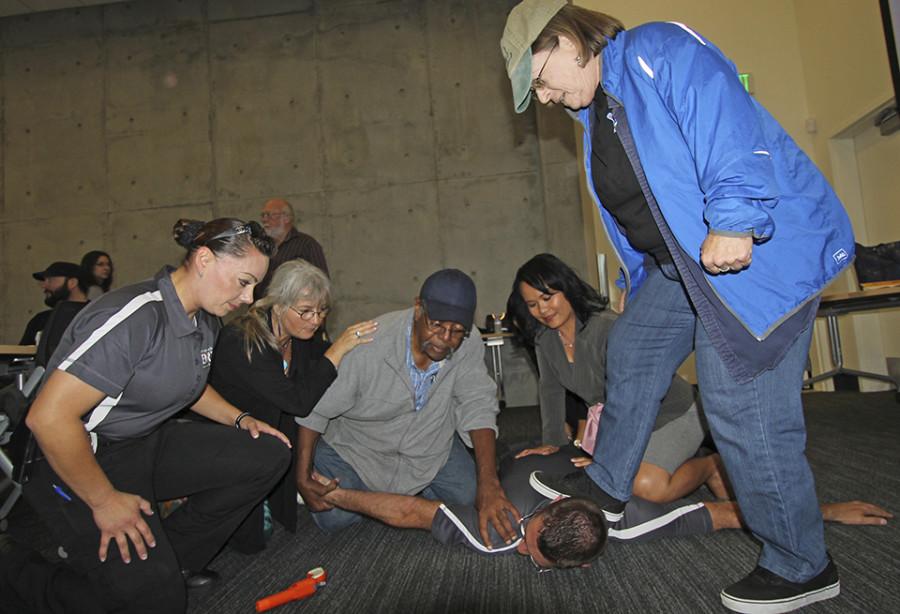
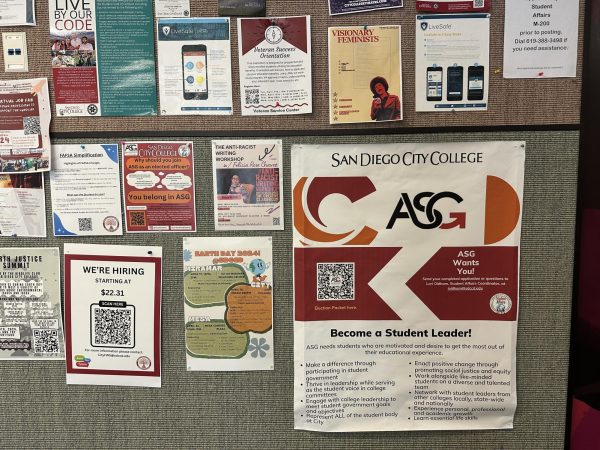
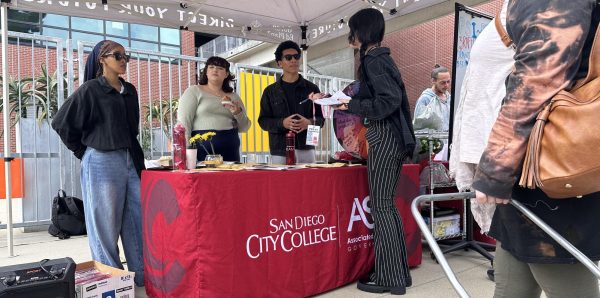


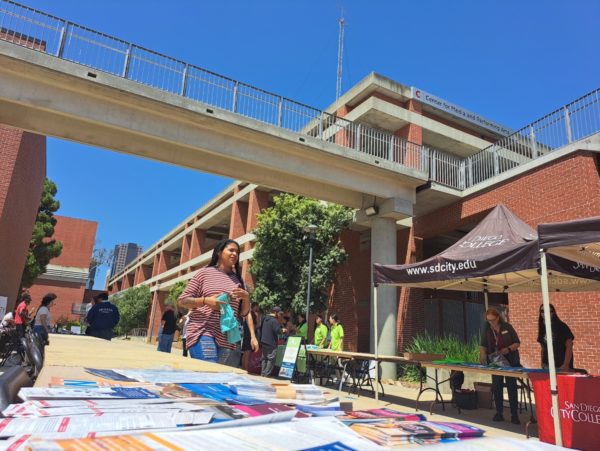
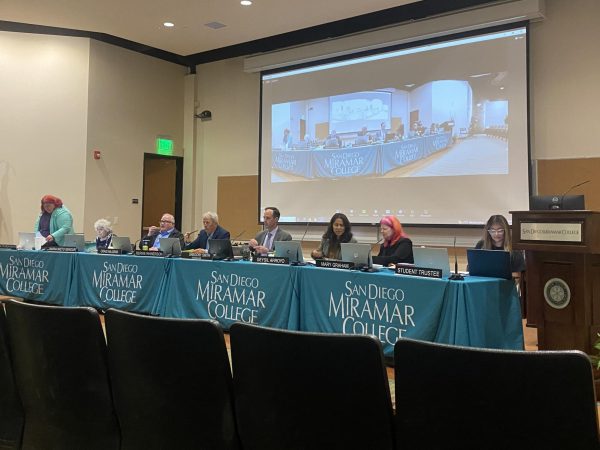
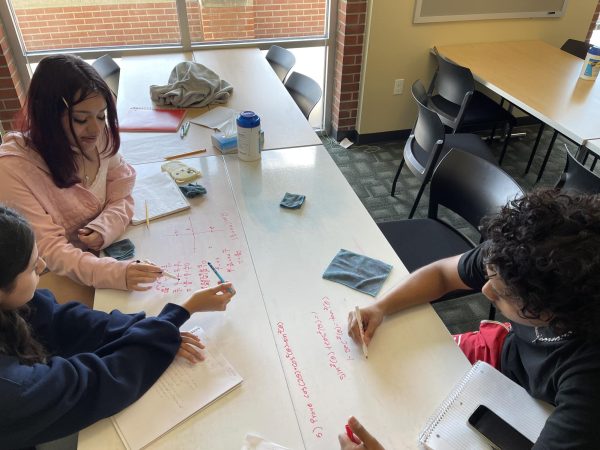
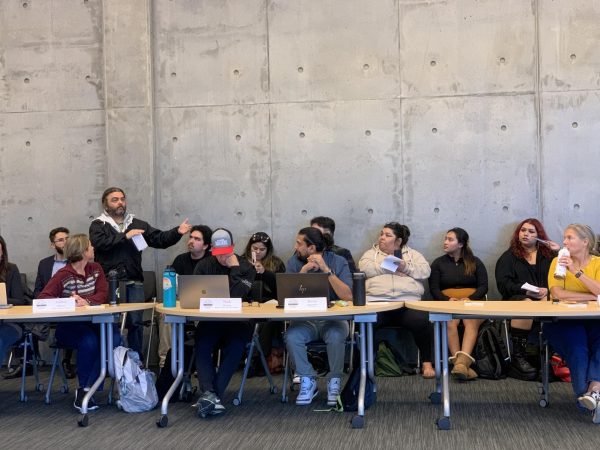
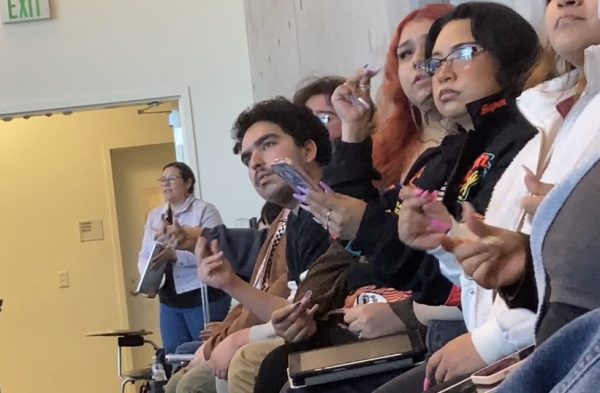


Larty • Nov 10, 2015 at 6:19 pm
“…San Diego Community College Police Department…” I wonder if they still use the POST test for the SDCCD police? I know that is a really interesting test, but the persons taking them can be even more disconcerting than some criminals. “Your money, ______!” I would say that’s an attempted strong arm robbery right in the testing session in El Cajon. That was a number of years ago, and hopefully they screen their applicants a little better now. And that was from a woman! A blond woman, true, and they’re usually known for odd outbursts and outlandish behavior, but if those do filter their way into the SDCCD police, then that could explain some of the trouble that’s been going on locally.
Corruption runs deep, and if these police are extorting students or school employees at all, we just have to hope they’re eventually caught.
What a terrible woman that was!
Ndolo • Nov 10, 2015 at 1:05 pm
Some people say it’s good to drink beer.
Peekq • Nov 10, 2015 at 9:41 am
Did CERN really do that? They let that dude’s niece intern or something there? Well, that’s a fairly dastardly move, especially since they took all those cheap copying machines from the local liquor stores so no one could copy things for SLAC. Not quite international intrigue, but what a price increase from 3 cent copies to FedEx’s machines. No, I agree with you, that’s simply because of the local Democrats trying to keep their heads down.
Personally, I don’t have to register, but Bill Horn doesn’t seem to get that. That counts for something when speaking about those persons, anyway. My guess is the only reason (or main one, anyway) for all the SD noise about “going green” is because they can’t figure out fission. CERN’s hiring practice sort of proves that. If local politicos could figure out politics we’d be much happier.
Francois • Nov 10, 2015 at 8:43 am
I think that letting G.W.’s niece work at CERN was more politically motivated than it was just allowing someone with qualifications to work there. She certainly wasn’t qualified, so indeed it was something due to the San Diego Democrat Club. That’s certainly reaching out a little too far.
Comments are certainly needed on this subject.
Melauka • Nov 8, 2015 at 2:04 pm
I like to read about this college being proactive both in educating and protecting our young citizens. We need more teachers like Alice teaching in the San Diego Community College District; we’ll be fit in both mind and body!
Ernold • Nov 6, 2015 at 10:54 am
Hey, this is a great article! So well written, but stop knocking our police force! They do no wrong, I haven’t read anything in the media about them making any mistakes at all.
What’s wrong with you?
zedrl • Nov 5, 2015 at 10:37 am
No comments? I thought for sure an article like this would have gotten some kind of remarks.
Mylor Ekold • Nov 4, 2015 at 4:58 pm
What, a police shooting on MLK Day just a short distance from the parade? An innocent bystander gunned down in the street, and Mayor Golding did nothing but reward those who covered it up?
Why, let my people go! We shall overcome! Oh, well, guess not.
Peldyo • Nov 4, 2015 at 3:13 pm
That’s nothing new: http://articles.latimes.com/1994-01-13/news/mn-11398_1_san-diego-police-department
The officers involved were bicycle cops who’d never pulled their guns in the line of duty before. One officer shot her bicycle tires as she was drawing her gun from its holster. This was textbook innocent bystander, the deceased was entirely uninvolved in the fracas.
The outcome? A wrongful death suit filed and lost against the city, a truly remarkable ruling by Mayor Golding’s Judge McConnell who later went on to the Council on Judicial Performance, an office she was obviously unqualified for. The Coroner’s forensic man who determined the ricochet was Mark Super, who later went on to greater things in the Sacramento Coroner’s office. Before, that is, he was let go for botching numerous homicide cases there. Notice there’s nothing much to ricochet off of around Golden West? Mostly glass down there.
Groovy as San Diego is, these people can’t get away with this up North where the capitol is. Golding reached some infamy before her last term ended, we’ve had mayors and police chiefs quit and resign, and there’s been who knows how many officers caught and fired for sexual misconduct while the mainstay of the sex crimes unit is still there, another of Golding’s marionettes who shouldn’t be eating on taxpayer dollars.
The woman? Someone unjustly forced from her home, her child wrongfully taken from her. Her friends unjustly persecuted, and not meaning the downtown flops she was forced to associate with in her final days. One thing good Golding did before she left was downtown beautification and the ending of Barney’s Brigade. But the woman’s legacy? You.
Bing bing bing bing bing! Ricochet Rabbit!